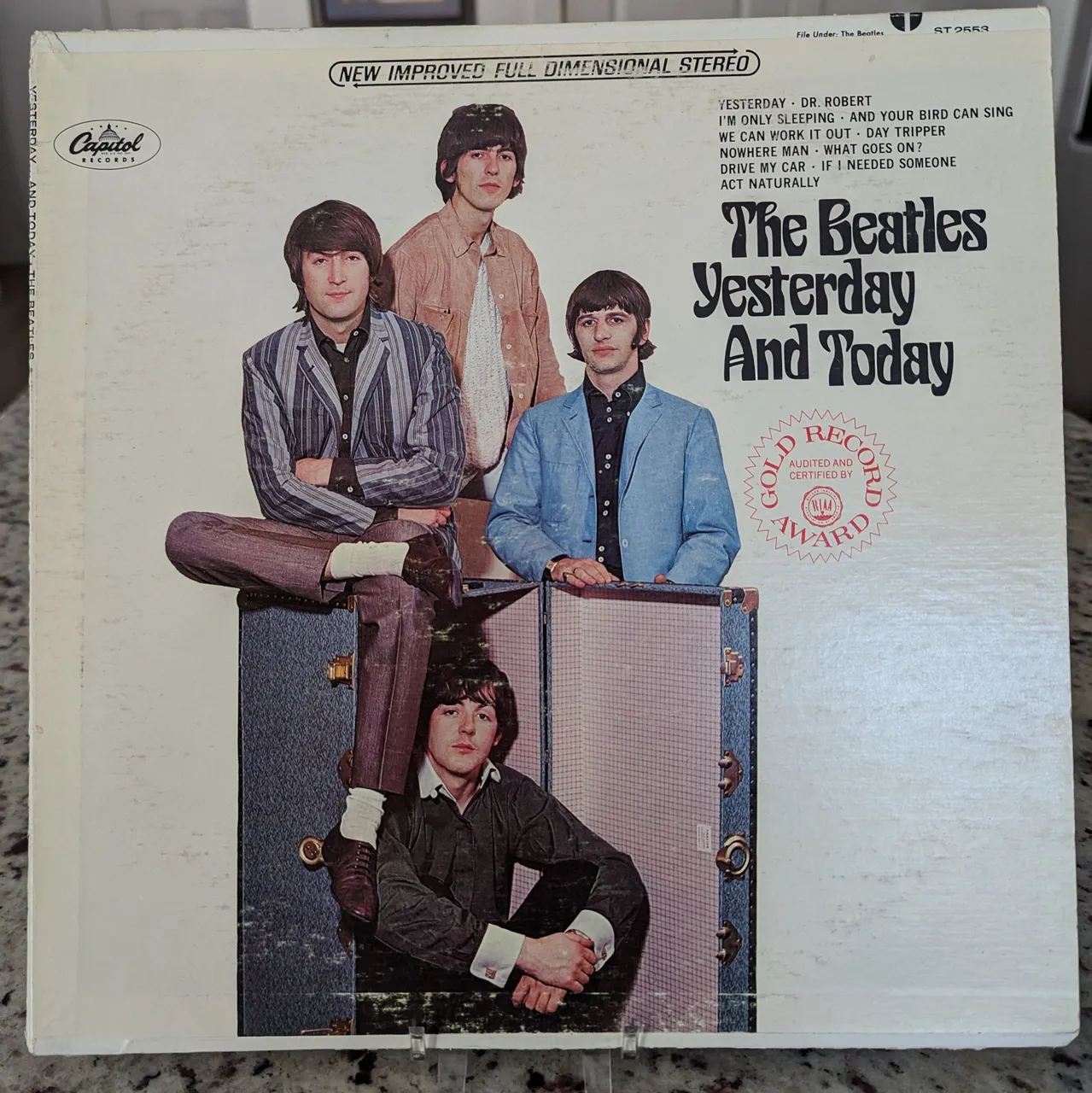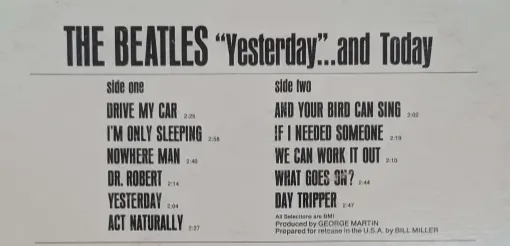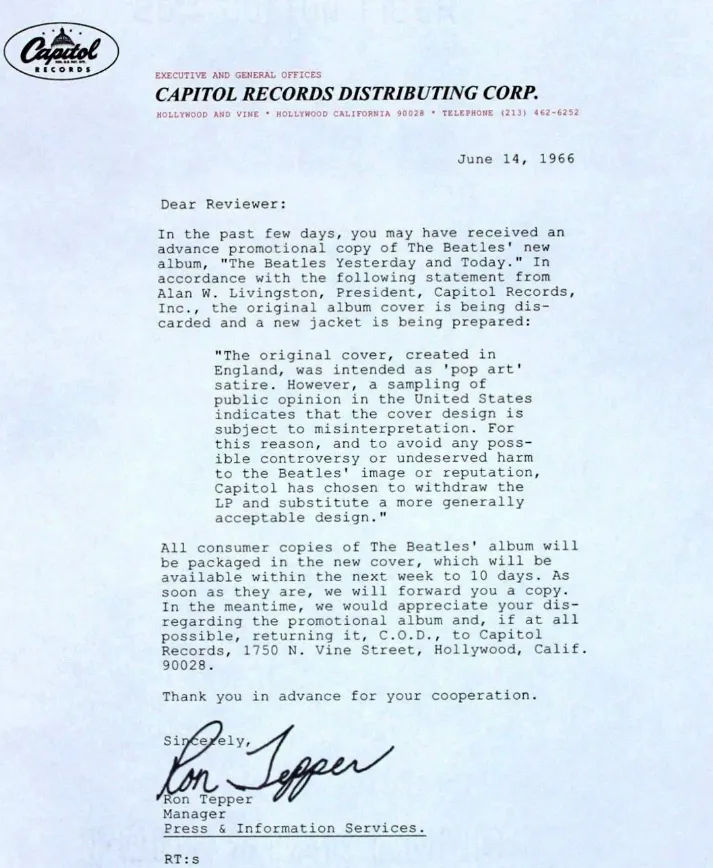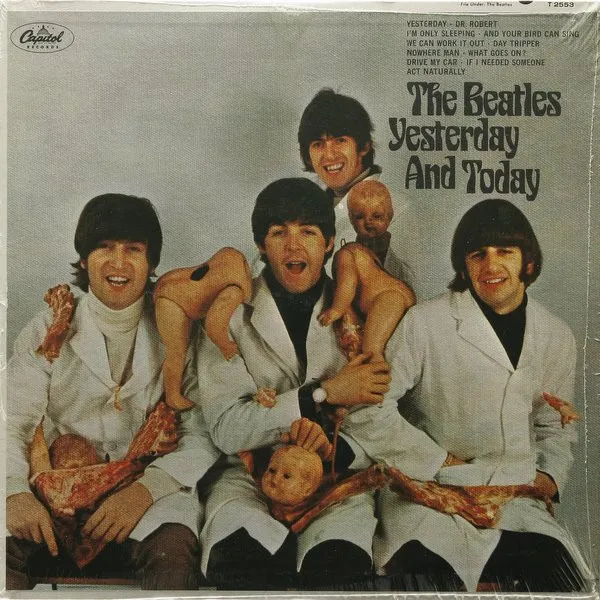Let's take a look at one of the rarest and most sought after albums ever, The Beatles Yesterday and Today.

Replacement cover ⬆️
The original pressing of this LP featured the below photo, and became known as the "butcher cover".

Before we get to further into that, let's look at the record industry in the 60s to get some context of how it came about.
Recoding Industry in the 60s
Back then, industry practices differed in Britain and the US. In Britain, albums usually contained 14 songs and did not contain any previously released singles. In the US, albums usually had only 12 songs and would include previously released singles.
Fewer tracks meant greater profits and fewer royalties to pay, as the price of the album would be the same, regardless of how many songs were on it. So, basically the US fucking the artist (like usual) :(
In Britain The Beatles and Parlophone Records worked out what songs to put on singles and which song went on long playing albums as well as the order of the songs. At the same time in the US, Capitol Records (the Beatles US record company), took songs that were unreleased yet in the US from different albums, without any input from The Beatles, and mashed them together on Yesterday and Today.
Here is some great info from this awesome article that goes deep into this cover and how it came about.


Part of the autonomy Capitol Records enjoyed included picking a cover for the album.
Yeah.
The record company, without any input from the artists, was able to pick a cover for the bands albums!?!?!
So Capitol requested some photos from Beatle shoots that had taken place and, included in the package, was a photo of The Beatles with decapitated dolls and raw meat. The photographer, Robert Whitaker, explains how that photo came about in a good article here.
Once the whole package was deiced upon Capitol pressed 750,000 copies at three different factories in the US in California, Illinois and Pennsylvania. As they pressed the albums they sent "several hundred" copies around the country to radio stations and reviewers. A good number of these people complained to Capitol that the cover was in poor taste. There was enough of a problem with these few hundred covers that parent company EMI, decided to recall the hundreds they had sent out and paste a new cover over the 750,000 copies already printed and waiting for shipment!
This is a copy of the letter Capitol sent to the folks they had sent the record to.

The three forms of the album and it's cover
There are three states, or designations, of the album cover:
First state is the album as it was originally printed.

Obviously the most valuable. I just found one that sold for $17,000 on May 21st! Remember, there were only "several hundred" of these that ever left the record plant.Second state is one with the new cover pasted over the butcher cover.

Here's one that just sold for $1899. These are becoming less available as they are found and professionally peeled.
Also I'll mention that when they pasted the new cover on, they had to trim about 1/4 inch off the open side of the jacket so the underneath image would not be seen.
- Third state cover is a cover that was pasted over, then peeled off to reveal the original butcher cover.

Here's one that sold for $2800 the other day.
The above photo is of the third state cover that I own :D it was given to me by my former father-in-law, who worked at a record store in LA in the mid 60s.
This one is in decent shape for a peeled cover and, from the looks of it on ebay, would probably sell in the $300-$500 range, were I to sell it.
There is a short history of how this album cover came to one of the most valuable ever, hope you enjoyed it :)
 day fellow Beatlemaniac :D
day fellow Beatlemaniac :D